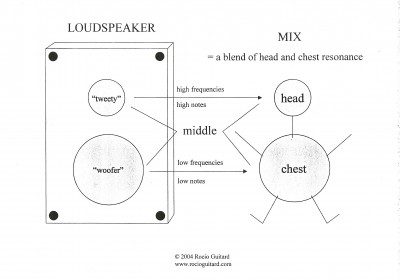It Doesn’t Sound Like Me – Part 2
Weekly Teaching Tip – Feb. 13, 2012 by Dominika Plonka
The conclusion “It Doesn’t Sound Like Me” never happend to my students – they never told me this. Here is the reason: It’s me, who tells them often during the first lesson (it’s about the students who don’t mix yet):”you don’t sound like you YET, because your voice will be much more beautiful and rich, when you will use full split resonance”.
One of the good and very simple examples is to to make them think of their sound when they are sick (when they have runny nose) – they sound different than normally, because their sinus don’t work properly and their resonance is different.
When they start to mix and they hear the different sound of their voice during the lesson, I tell them that this new voice is going to be their real voice. Sometimes I tell them even stronger: if they don’t let happen the split resonance – they will sound worse even if they will feel more comfortable for now in one of the resonances (only head or only chest). I encourage students to move between different places of resonance and to get the habit of the split, and when they find it – they have the proof that it’s much more comfortable than before mixing.
One opposite example – when I want student to “don’t sound like me”: When I use different tools like nasty or hooty sounds – I always tell them that this sound is temporary, just for training. Like a sportsman, who does some different kinds of gymnastics. For example – the runner doesn’t run all the time, he has to do some knee bands to to get fit 🙂 So even when the students “Don’t Sound Like Me” during exercices – I always explain very shortly the reason why I gave them this kind of the exercice.
And my last thougt about the mix, one of the most effective, when I try to explain the mix: One of my favorite images is from the Rocio Guitard’s masterclass. She gave it to us during her masterclass in Krakow in 2004. I sent it to you in the attachement.
I often tell my students (especially the ones who have tendency to flip) this example: The loudspeaker has 2 different membranes: the bigger one which plays lower sounds, the smaller one – higher sounds. The same happens in our body – our chest is responsable for lower sounds, head – for higher.
I added my own conclusion to this image: In the loudspeaker NEVER happens the situation that only one of the membranes vibrates: ALWAYS both of them are playing the music. So in our body we should use BOTH resonances always, even if we feel stronger one of the places. Usually when I give the student this example – it works immediately, they start to use chest and head resonance in one time – so they start to mix 🙂



